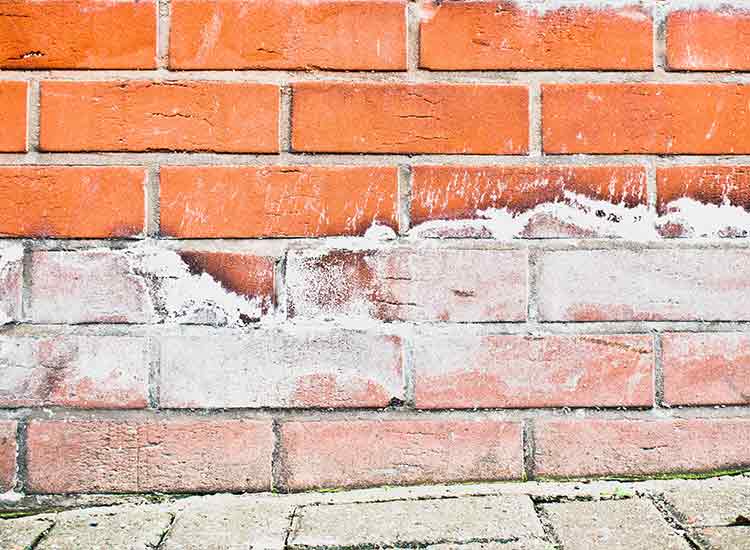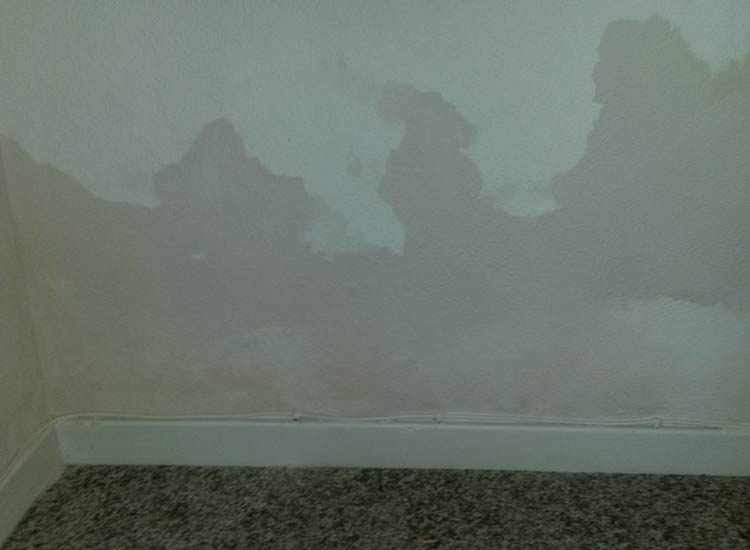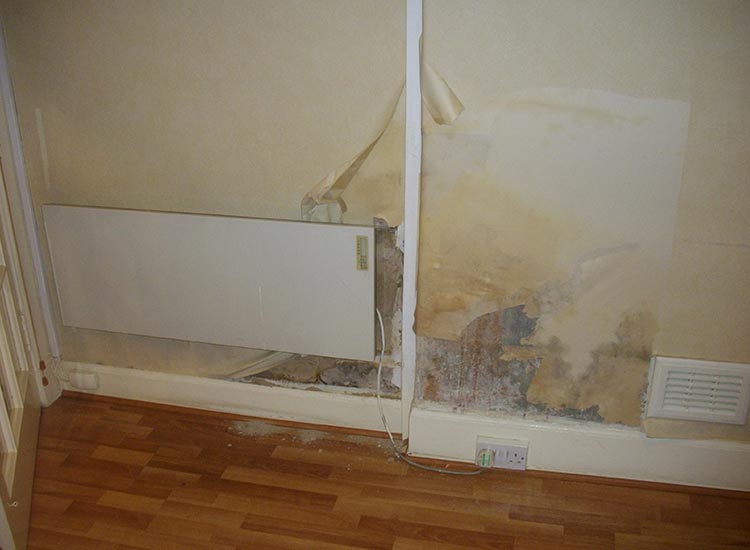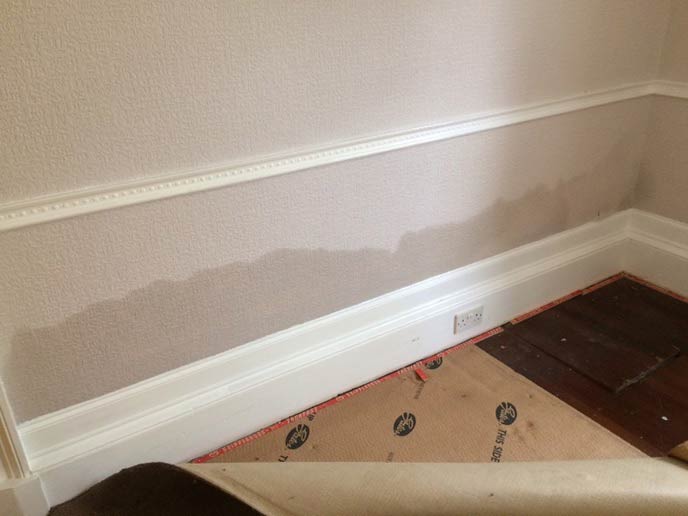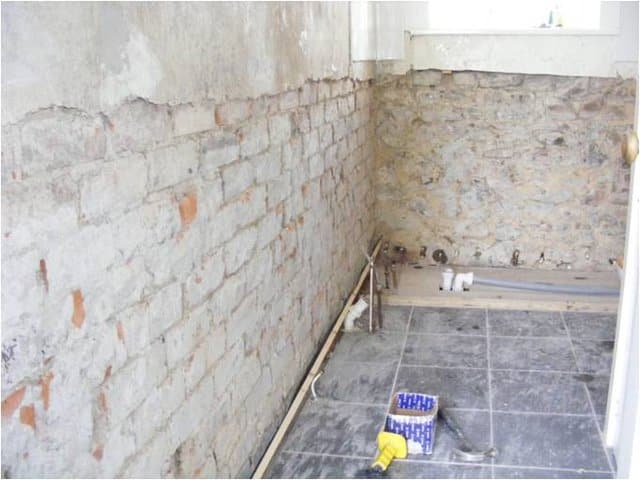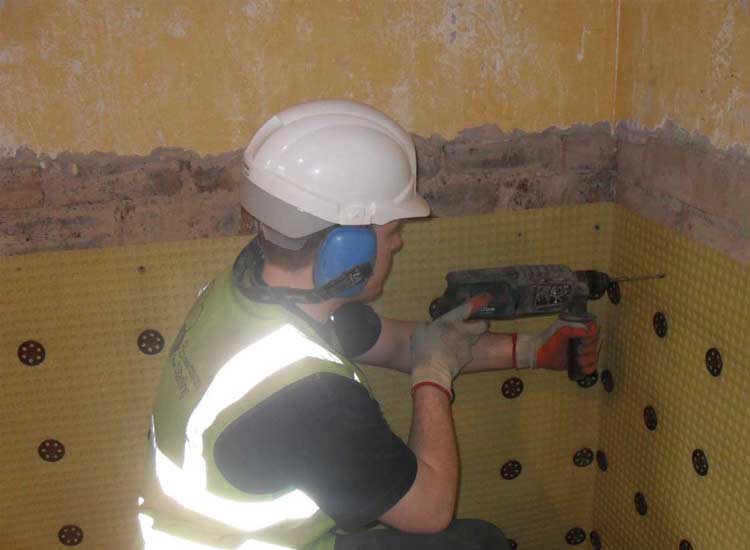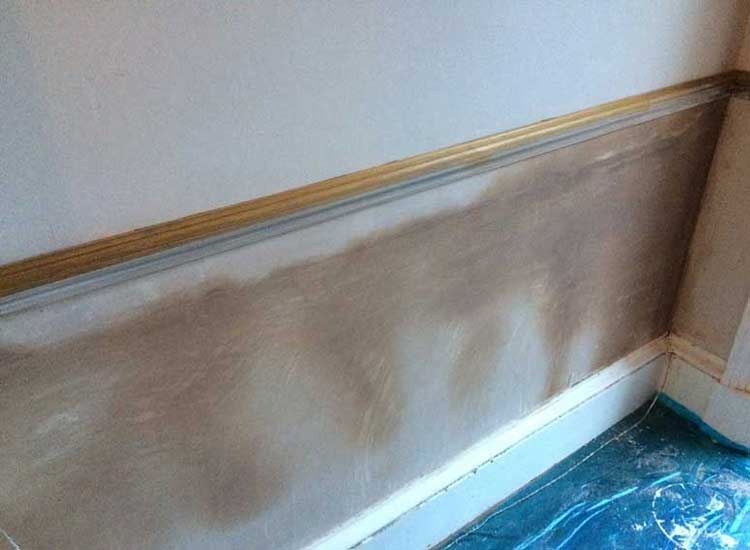Rising Damp Aberdeen
Flaking paint patches on your walls can be a clear indication that you are suffering from rising damp. Other clear signs that your properties walls are suffering from rising damp are if your wallpaper is no longer able to stick to the wall or tidemarks are seen. Our Aberdeen branch specialists can ensure that you receive an accurate diagnosis of your problem and the most appropriate solution is provided through advice or a property survey. It is important that you do not misdiagnose your damp problem as this can exacerbate the rising damp issue significantly.
- 30 Year Guarantee
- Award-Winning Contractor
- Experienced & Qualified, Aberdeen Surveyors & Technicians
What Causes Rising Damp?
Bricks and mortar are very porous which provides water with the perfect opportunity to travel upwards from the ground through very narrow spaces and pores. This means that moisture can spread upwards through the wall due to liquids damaging ability to move against gravity. Bricks and mortar absorbing this moisture is what causes rising damp to occur in walls. Your wall is absorbing the groundwater which is damaging the wall fabric itself.
Damp proof courses (DPC) are automatically installed in newly built properties. This course is designed to stop moisture from gaining access to the brick and mortar of your property’s walls above the DPC. Plastic, bitumen or slate are materials often used as a damp-proof course to ensure that any water is immediately stopped from rising above the damp proof course from the ground and the wall’s foundations. A poorly fitted or damaged damp-proof course presents water with the opportunity to breach the wall and cause rising damp as a result. It is a poor practice to not have a damp-proof course installed in your home as this means you have not taken the most basic of precautions to stop rising damp occurring in your property.
How To Identify Rising Damp
Rising Damp Signs:
- High moisture content in lower section of walls
- Tidemark looking stains
- Wrinkled or crumbling plaster
- Visible salt deposits
- Plaster and decoration discolouration and damage
- Dark damp patches on walls
- Musty damp smells
- Low surface temperature at the bottom half of the wall
- Noticeable rotting of floor and wall timbers
Damp ground soils can cause moisture to be pulled up the walls resulting in rising damp. For this reason, rising damp can only occur on the ground floor of properties. Therefore, if the damp problem you have identified is above the ground floor then it is more likely you are looking at a penetrating damp or condensation problem.
The most likely signs of rising damp can be misdiagnosed so it would be helpful to make yourself familiar with the signs. Our Rising Damp FAQ page can help you to better understand the most obvious signs of rising damp.
Rising Damp Treatment & Repairs
There is a danger that attempting to administer self-treatment can seriously impact the time taken and increase the cost to resolve your property rising damp problem. Without receiving an accurate diagnosis from a specialist from our Aberdeen branch of the source of your problem you may provide an ineffective solution. Our specialists can provide you with a thorough evaluation of your damp and damaged walls and will provide the most appropriate solution.
What our specialist will do:
- Thoroughly evaluate the area which rising damp is affecting
- Find the source of the water getting into your walls
- Evaluate your predicament before informing you of the necessary steps in order to eradicate the rising damp.
- Provide you with an easily understandable survey report and specification
- Administer the most efficient solution
After your damp problem has been sufficiently surveyed, our specialists will then carry out the necessary work to rectify your rising damp issue. After investigating the condition of the properties construction our specialists will either fix the current damp course which is installed or build an entirely new one for your home. Another reliable technique which can be used to deal with rising damp is through a chemical damp-proof course. The system acts as a constant layer of a waterproof barrier which is designed to stop dampness from rising through the wall from the ground.
For more developed rising damp problems, typical solutions involve drilling numerous holes in the affected walls and inserting waterproof cream into these holes. Plasterwork which is damp will be removed to ensure that any salt contaminated areas will be replaced with a cavity wall membrane system before being re-plastered or application of a renovating plaster. Our specialists will select the most appropriate solution for your home and guide you through each step of the process.
Property Survey
Our Aberdeen rising damp specialists will closely investigate the affected area and measure the scale of the problem. At Richardson and Starling, we only supply experienced surveyors who are highly trained in all types of rot and damp problems that could affect your property. This means that our surveyor will be able to complete the survey and give the appropriate remedial recommendations no matter what problem is identified.
30 Year Guarantee
Free automatic transfer to the new property owner if sold.
30 Year Guarantee for Rising Damp Repairs
After eight decades of successful property surveys and repairs, we’re confident to offer you a 30 Year Guarantee that transfers with the Property.
Richardson & Starling are long-standing members of the Property Care Association (PCA) and the Guarantee Protection Insurance scheme (GPI). This demonstrates our ability to meet technical and financial requirements to offer an insurance back-up to our own long term guarantees if you would like this.

